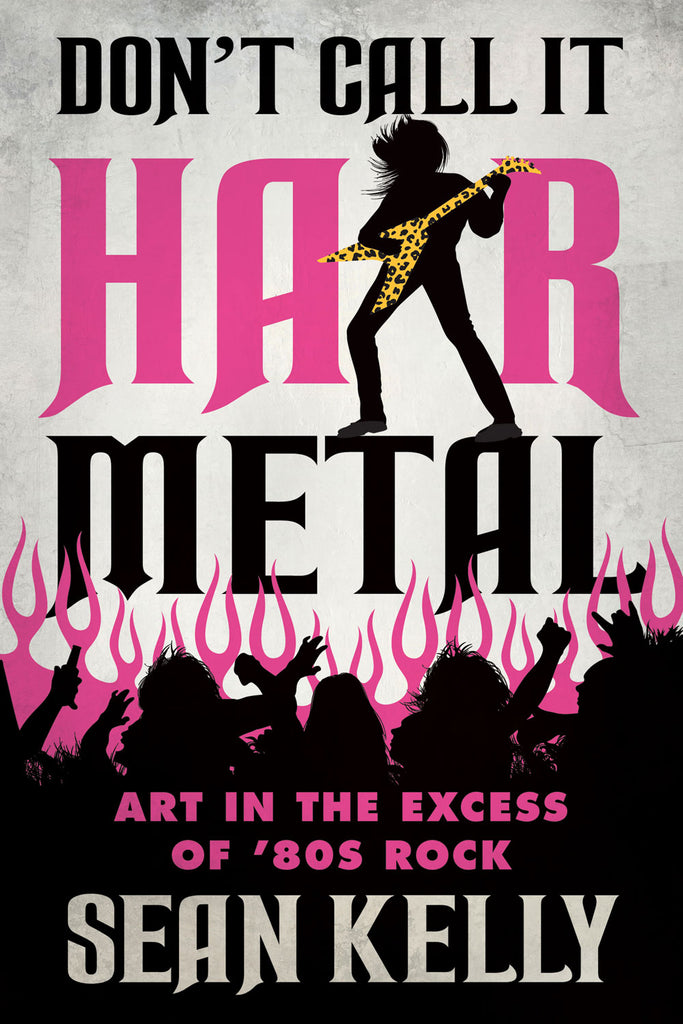
Don’t Call It Hair Metal: Art in the Excess of ’80s Rock
$16.99-
A love letter to the hard-rocking, but often snubbed, music of the era of excess: the 1980s
There may be no more joyous iteration in all of music than 1980s hard rock. It was an era where the musical and cultural ideals of rebellion and freedom of the great rock ’n’ roll of the ’50s, ’60s, and ’70s were taken to dizzying heights of neon excess. Attention to songcraft, showmanship, and musical virtuosity (especially in the realm of the electric guitar) were at an all-time high, and radio and MTV were delivering the goods en masse to the corn-fed children of America and beyond.
Time hasn’t always been kind to artists of that gold and platinum era, but Don’t Call It Hair Metal analyzes the sonic evolution, musical diversity, and artistic intention of ’80s commercial hard rock through interviews with members of such hard rock luminaries as Twisted Sister, Def Leppard, Poison, Whitesnake, Ratt, Skid Row, Quiet Riot, Guns N’ Roses, Dokken, Mr. Big, and others.
BUY FROM:
Price may vary by retailer
Check availability at your local Canadian independent bookstore:
Remember that most stores can easily order books they don’t currently have in stock.
BUY FROM ECW PRESS:
-
Sean Kelly has performed with Nelly Furtado, Lee Aaron, Coney Hatch, Helix, Gilby Clarke, Trapper, Rough Trade, and Crash Kelly. In 2015, he performed in Twisted Sister frontman Dee Snider’s Rock & Roll Christmas Tale. Kelly is a music teacher with the Toronto Catholic District School Board.
-
Published: May 2023
ISBN: 9781770416437
Dimensions: 6 x 9 in.
Pages: 312
Reviews
“VERDICT A solid addition to any library’s music collection.” — Library Journal
“Everything you want to know but were afraid to ask about what went on behind the scenes in the evolution of heavy metal is well accounted for in Sean Kelly’s Don’t Call It Hair Metal. This book is great at delving into the origin of many famous bands from the 70’s onward, and the reasons why they’ve kept at it throughout the years.” — Absolute Underground Magazine
“His obviously huge knowledge of the genre shows in playful references and wordplay, and it's sort of like having beers with a new friend talking about all our old friends.” — BraveWords
“Sometimes a book comes along that is simply a dream to read and review. Don’t Call It Hair Metal is one of those reveries: fiercely well-written, nostalgic, energetic, a blend of the historical...and the personal that almost constantly rings the right notes.” — The British Columbia Review
“Kelly’s knowledge of band members, family tree timelines of players moving between groups, and the back-story of how albums were recorded, is encyclopedic and just plain impressive.” — Lippert Music Centre Inc., Music Student Corner and Blog
“The term “hair metal” has always bothered me because a number of musical influences are woven into the fabric of this genre. It doesn’t matter what you call it because it’s still rock and roll to me… and I’m rather certain that Sean Kelly agrees with me and you will, too, after reading. Don’t mind me, though, I’m going to listen to my Spotify playlist containing 10,000 of the best songs that fall into this very category, because after this book, I can’t get enough.” — The Aquarian
